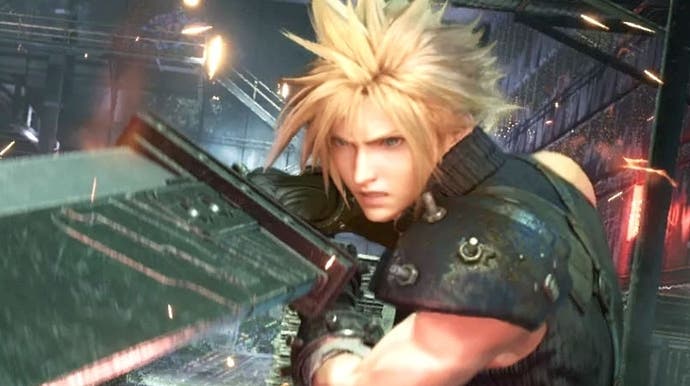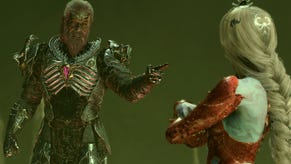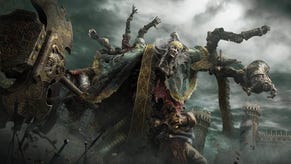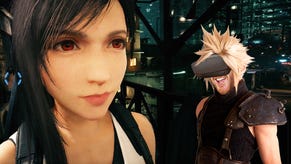Upgrading a classic: a first look at the technology of Final Fantasy 7 Remake
Sacrilege or sensation? How Square-Enix and UE4 redefine an iconic experience.
Potentially one of the most exciting games of the year, Final Fantasy 7 Remake takes a beloved, stone-cold PS1 classic and revitalises it with the power of current generation console technology. What were once basic polygon models overlaid on pre-rendered backgrounds, interspersed with full motion video CG sequences has evolved - with full real-time rendering at a quality that far exceeds what Squaresoft could even dream of, let alone achieve back in 1997. The excitement is palpable - stoked still further by the surprise 'drop' of a demo early on Monday morning.
In an age of often colossal downloads, it's refreshing to see the demo clock in at just 8GB - a drop in the water next to the 100GB install size understood to be listed on the retail box. Still, the demo packs a real punch, offering 45-60 minutes of action, depending on how you tackle it, covering Cloud and Avalanche's route up to the first Mako reactor core. You learn the basics of combat, evade laser beam traps and end it all with a boss battle against a Scorpion boss.
It's literally the first hour of the game, but obviously, it's not final code - PSN hackers were able to access the demo months ago, after all. With that in mind, gameplay elements can be altered and story elements tweaked by the time the game launches on April 10th. Technically though, what we've got right here with this Unreal Engine 4-powered project is already extremely polished on PS4 and PS4 Pro, to the point where if Square-Enix ships the title like this, we'd be perfectly happy.
Perhaps learning from the lessons of a somewhat uneven showing on Kingdom Hearts 3, Final Fantasy 7 Remake reveals a developer more at home with the UE4 technology. The somewhat disappointing 900p/1296p resolution split seen with Kingdom Hearts on base and enhanced consoles gets a significant upgrade to a dynamic 2880x1620 on PS4 Pro and a dynamic 1920x1080 on the vanilla PS4. The DRS solution on Pro is relatively restrained, with most of the action playing out at the 1620p upper bounds, with the most heavy scene - the Scorpion boss battle - dropping to 2304x1296. Owing to the frenetic action and the reliance on TAA, the drop to image quality is not especially an issue.
Dynamic resolution is less commonly seen on base PlayStation 4, but there are cases here where it can drop to 1600x900, notably in the Scorpion boss. No further tweaks or cutbacks are immediately noticeable between the two machines: motion blur, depth of field, shadow quality and volumetrics all play out at the same quality level. Meanwhile, performance is entirely locked at a properly frame-paced 30 frames per second on both consoles. Try as we might to break the game, the FF7R demo played out with absolute consistency - a breath of fresh air after the variable frame-rate (and uneven frame-pacing on Pro's stable mode) in Kingdom Hearts 3.
But really, it's all about the creative process of remaking a classic PS1 title using state-of-the-art technology matched with the power of current-gen console technology. In this sense, the original FF7 almost serves as a rough guideline as opposed to a strict blueprint, where the creative liberties exercised by the developers come to the forefront as much as its massive visual upgrade. However, with the move to UE4 and its stunning physically-based rendering, it's brilliant to see iconic shots from the original release remade entirely in-engine, playing out in real-time. Cloud looking up to the Mako reactor during the bombing mission is one such moment; a key artwork that was used for the game's front cover in the US - only now redrawn in real-time on UE4.
For a game so well-known for its reliance on pre-rendered video sequences, it's apt that the demo should kick off likewise with that iconic camera pull-back, taking us from Aerith on the streets, up to a full overview of Midgar. This even uses the same trick as the PS1 original; it begins with a heavy pre-rendered FMV element, using higher quality models and LOD switching but thengoes on to blend into gameplay seamlessly thanks to a strategically placed cloud of smoke. You can't easily catch where one starts and the other ends, and before you know it, you're controlling Cloud at the station platform. It's the only major pre-rendered cut-scene bulking out the 8GB install - but it sets the tone beautifully.

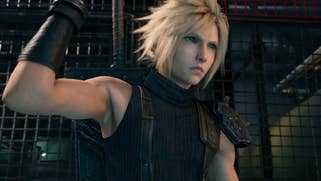
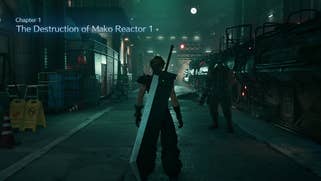
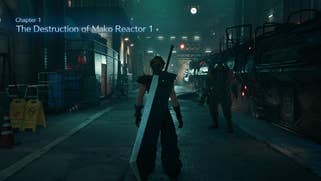

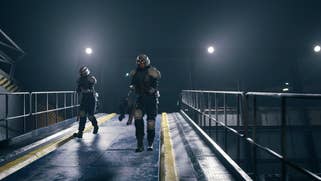
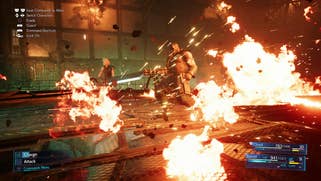

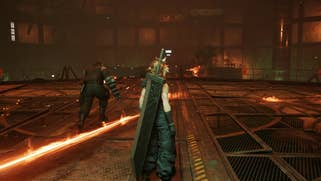

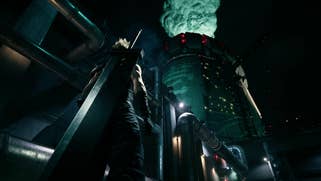
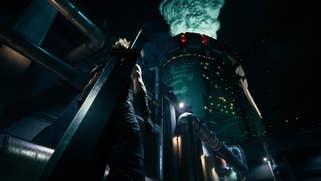
Once into the actual game, it's fascinating to see how deftly UE4's features are deployed to render Square-Enix's vision for a fully real-time FF7. Volumetrics are used to create a polluted effect on the station platform and, generally, everything has a great sense of depth as we're funnelled through the thin reactor corridors - with effective bloom on blinking lights and collectibles on the ground. Dynamic spotlights are used across Midgar, too; we don't see much direct sunlight given Midgar's slums are beneath a metallic plate. During the reactor bombing mission, artificial spotlights are the main, direct source of any lighting, reacting convincingly with the physically-rendered clothes.
We've reached the point where the way light interacts with materials is approaching the photo-real - a huge upgrade, even compared to the Advent Children CG movie. Hair is an impressive feat too. As we saw with Kingdom Hearts 3, tresses take on a curious, feathered look: the transparent quality of Cloud's hair shines right away, especially when viewed in front of upcoming lights in the opening scene. The presentation is only bolstered by the effects work: particles fly everywhere with every strike, lighting the scene with every blow.
Fundamentally, while what we have here is obviously a tiny sampler of the adventure to come, the Final Fantasy 7 Remake demo does everything it needs to. In addition to giving us an all-important slice of actual gameplay, it does a great job of setting out how the developer intends to work with and remix the source material, while providing all the affirmation we need that the team's creative talents and UE4's core technology are both capable of delivering a stunning experience. We'll be reporting back with a far more in-depth look at the final product closer to the game's April 10th release date.
